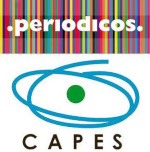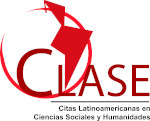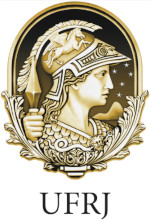Relevance and perception of thermal comfort in the classroom learning process
DOI:
https://doi.org/10.26849/bts.v44i2.693Keywords:
Learning, Education, Thermal comfort, School buildingAbstract
This study aims to demonstrate the relevance of thermal comfort and its impact on learning according to students’ perception in the classroom. As a method, a brief bibliographical review was carried out on thermal comfort in school buildings. Then, a questionnaire was applied among students of a higher education institution in Belo Horizonte in the classrooms on days of the four seasons. The thermal discomfort, for 70% of the students, impaired study activity and attention to the content of the classes, causing impatience.
Downloads
References
ALMEIDA, Ricardo M. S. F.; RAMOS, N. M. M.; FREITAS, V. P. de. Thermal comfort models and pupils’ perception in free-running school buildings of a mild climate country. Energy and Buildings, v. 111, p. 64-75, 2016.
AMBONI, J. D.; SILVEIRA, W. J. C. A interferência da administração universitária em projetos de empreendimentos universitários. In: FÓRUM MESTRES E CONSELHEIROS: MUNICIPALIZAÇÃO DO PATRIMÔNIO E EDUCAÇÃO PATRIMONIAL, 3., 2011, Belo Horizonte. 3º Fórum… Pelotas: Universidade Federal de Pelotas/Programa de Pós-Graduação em Memória Social e Patrimônio Cultural, 2011.
AMERICAN SOCIETY OF HEATING, REFRIGERATIN AND AIR-CONDITIONING ENGINEERS. ANSI/ASHRAE 55: thermal environmental conditions for human occupancy. Atlanta, 2013.
ASSOCIAÇÃO BRASILEIRA DE NORMAS TÉCNICAS. NBR 15.220-3: desempenho térmico de edificações, parte 3: zoneamento bioclimático brasileiro e diretrizes construtivas para habitações unifamiliares de interesse social. Rio de Janeiro, 2005.
AZEVEDO, G. A. N. Arquitetura escolar e educação: um modelo conceitual de abordagem interacionista. 2002. Tese (Doutorado em Engenharia de Produção) - Pós-graduação em Engenharia-COPPE, Universidade Federal do Rio de Janeiro, Rio de Janeiro, 2002.
AZEVEDO, G. A. N. As escolas públicas do Rio de Janeiro: considerações sobre o conforto térmico das edificações. 1995. Dissertação (Mestrado em Arquitetura) - Faculdade de Arquitetura e Urbanismo, Universidade Federal do Rio de Janeiro, Rio de Janeiro, 1995.
AZEVEDO, G. A. N. Sobre o papel da arquitetura escolar no cotidiano da educação: análise das interações pessoa-ambiente para a transformação qualitativa do lugar pedagógico. In: ENCONTRO NACIONAL DE TECNOLOGIA DO AMBIENTE CONSTRUÍDO, 14., 2012, Juiz de Fora. Anais... Juiz de Fora: ANTAC, 2012. p. 3494-3504.
BARNARD, H. Practical illustrations of the principles of school architecture. Hartford: Press of Case, Tiffany and Company, 1851.
BARNARD, H. School architecture, or contributions to the improvement of school-houses in the United States. New York: Charles B. Norton, 1854.
BERNARDI, N.; KOWALTOWSKI, D. C. C. K. Environmental comfort in school buildings: a case study of awareness and participation of users. Environment and Behavior, Tuscon, v. 38, n. 2, p. 155-172, 2006.
BERTOLOTTI, D. Iluminação natural em projetos de escolas: uma proposta de metodologia para melhorar a qualidade da iluminação e conservar energia. 2007. Dissertação (Mestrado em Arquitetura) - Universidade de São Paulo, 2007.
BLUYSSEN, P. M. The role of flooring materials in health, comfort and performance of children in classrooms. Cogent Psychology, v. 3, n. 1, p. 1-8, 2016.
BRASIL. Ministério da Educação. Custo Aluno Qualidade. Relatório final: GT CAQ: portaria 459, de 12 de maio de 2015. Brasília, DF, 2015. Disponível em:
<http://pne.mec.gov.br/images/pdf/publicacoes/RELATORIO_FINAL_GT_CAQ_out_15.pdf>. Acesso em: 4 set. 2017.
BRASIL. Ministério da Educação e Cultura. Fundo de fortalecimento da escola: espaços educativos: ensino fundamental: sudsídios para elaboração de projetos e adequação de edifício escolar. Brasília, DF: Fundescola, 2002. 2 v.
CONCEIÇÃO, E. Z. et al. Development of a temperature control model used in HVAC systems in school spaces in Mediterranean climate. Building and Environment, v. 44, p. 871-877, 2009.
CORGNATI, S. P.; ANSALDI, R.; FILIPPI, M. Thermal comfort in Italian classrooms under free running conditions during mid seasons: Assessment through objective and subjective approaches. Building and Environment, v. 44, p. 785-792, 2009.
FERREIRA, C. C. Análise de sensibilidade por meio de experimento fatorial de parâmetros de desempenho térmico de envoltórias de edificações residenciais: contribuição à revisão das normas brasileiras. 2016. Tese (Doutorado em Engenharia Civil) - Programa de Pós-Graduação em Engenharia Civil, Escola de Minas, Universidade Federal de Ouro Preto, Ouro Preto, 2016.
GRAÇA, V. A. Z.; KOWALTOWSKI, D. C. C. K.; PETRECHE, J. R. D. An evaluation method for school building design at the preliminary phase with optimisation of aspects of environmental comfort for the school system of the State São Paulo in Brazil. Building and Environment, v. 42, n. 2, p. 984-999, 2007.
INSTITUTO BRASILEIRO DE ADMINISTRAÇÃO MUNICIPAL. Manual para elaboração de projetos de edifícios escolares na cidade do Rio de Janeiro. Rio de Janeiro, 1996.
INTERNATIONAL ORGANIZATION FOR STANDARDIZATION. ISO 7730: ergonomics of the thermal environment: analytical determination and interpretation of thermal comfort using calculation of the PMV and PPD indices and local thermal comfort criteria. Genebra, 2005.
KOWALTOWSKI, D. C. C. K.; FUNARI, T. Arquitetura escolar e avaliação pós-ocupação. In: ENCONTRO NACIONAL SOBRE CONFORTO NO AMBIENTE CONSTRUÍDO, 8.; ENCONTRO LATINO-AMERICANO SOBRE CONFORTO NO AMBIENTE CONSTRUÍDO, 4., 2005, Maceió. Anais... Maceió: ANTAC, 2005. p. 2255-2257.
KROEMER, E.; GRANDJEAN, E. Manual de ergonomia adaptando o trabalho ao homem. 5. ed. Porto Alegre: Bookman, 2005.
LAMBERTS, R. Conforto e stress térmico. Atualizações: Antonio Augusto Xavier, Solange Goulart, Renata De Vecchi. [Florianópolis]: Universidade Federal de Santa Catarina, Departamento de Engenharia Civil, 2016. Disponível em: <http://www.labeee.ufsc.br/sites/default/files/disciplinas/Apostila%20Conforto%20T%C3%A9rmico_2016.pdf>. Acesso em: 10 jun. 2017.
LAMPRECHT, B. M. Richard Neutra: complet works. New York: Taschen, 2000.
LEWINSKI, Peter. Effects of classrooms’ architecture on academic performance in view of telic versus paratelic motivation: a review. Frontiers in Psychology, Lausanne, v. 6, p. 746, 2015.
LOUREIRO, C.; AMORIM, L. Por uma arquitetura social: a influência de Richard Neutra em prédios escolares no Brasil. Arquitextos, São Paulo, v. 20, n. 20, p. 3, 2002.
NATIONAL INSTITUTE OF BUILDING SCIENCES. National Clearing House for Educational Facilities. Washington, DC, 2016. Disponível em: <http://www.ncef.org/>. Acesso em: 3 abr. 2016.
NEUTRA, R. Arquitetura social em países de clima quente. São Paulo: G. Todtmann, 1948.
SCHNEIDER, M. Do school facilities affect academic outcomes? Washington, DC: National Clearinghouse for Educational Facilities, 2002. Disponível em: <http://www.ncef.org/pubs/outcomes.pdf>. Acesso em: 11 nov. 2016.
STANSFELD, S. A.; MATHESON, M. P. Noise pollution: non-auditory effects on health. British Medical Bulletin, v. 68, n. 1, p. 243-257, 2003.
TORO, M. G. U. Avaliação acústica de salas de aula em escolas públicas na cidade de Belém-PA: uma proposição de projeto acústico. 2005. Dissertação (Mestrado em Engenharia Mecânica) - Universidade Federal do Pará, Belém, 2005.
TREBILCOCK, M. et al. The right to comfort: a field study on adaptive thermal comfort in free-running primary schools in Chile. Building and Environment, v. 114, p. 455-469, 2017.
VILCEKOVA, S. et al. Indoor environmental quality of classrooms and occupants' comfort in a special education school in Slovak Republic. Building and Environment, v. 120, p. 29-40, 2017.
WARGOCKI, P. et al. The effects of classroom air temperature and outdoor air supply rate on the performance of school work by children. Proceedings of Indoor Air I, v. 1, p. 368-372, 2005.
Downloads
Published
How to Cite
Issue
Section
License
Commitment to the Provision of Creative Commons Licensing
The Senac Journal of Education and Work is per the BY NC license, free of charge and with no commercial purpose.
In submitting their work for evaluation, the authors undertake to make their work available through the Creative Commons-BY NC license at the website <https://br.creativecommons.org>, thus dispensing with the need for signing any other document or contract with Senac to regulate the availability of their works in the Senac Journal of Education and Work.
The author (s) further declare that they recognize the Senac Journal of Education and Work as an open access journal, whose Policies and Authors Guidelines are available to know on its official website, namely - www.bts .senac.br - and that they can be modified at any time, and immediately any new condition published online.
The names and addresses informed in this journal will be used exclusively for the services provided by this publication and are not available for other purposes or to third parties.




















